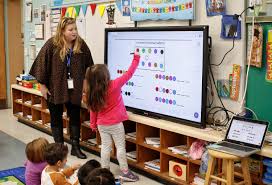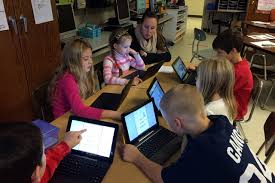
https://encrypted-tbn0.gstatic.com/images?q=tbn:ANd9GcT5Wd7BCF4_OrZi7c0UzGqv_9-S01DD-wkjMQ&s
In today’s digital age, the debate surrounding social media and technology use in schools is more relevant than ever. While some argue that excessive screen time and social media usage are harmful to our society, others believe in the many benefits they bring to both individuals and communities. As educators, parents, and students, it’s important to understand both sides of this debate and its effect on our schools.
Recently, I had the opportunity to explore this topic further through a very engaging documentary titled “Social Media: Impact on Our Society”. The documentary shed light on the many ways social media influences our lives, from communication and relationships to mental health and education.
I also read into insightful articles like “Schools Say No to Cellphones in Class” and “Cellphone Bans Can Ease Students’ Stress and Anxiety, Educators Say” from Education Week. These articles provided valuable perspectives from educators and experts on the effects of cellphone use in schools. They highlighted concerns about distraction, cyberbullying, and the impact on students’ well-being, but also acknowledged potential benefits like reducing stress and anxiety levels.
So, where do I stand on this debate in terms of its relationship to schools?
I believe that finding a balance is key. While I recognize the potential risks associated with excessive social media and technology use, I also acknowledge the positive impact they can have when used responsibly and usefully in educational settings.
It’s essential for schools to establish clear guidelines and boundaries regarding cellphone use to minimize distractions and safeguard students’ well-being. However, outright bans may not be the most effective solution. Instead, educators should use technology as a tool for learning, communication, and collaboration in the classroom.
By incorporating technology in education and teaching responsible technology use, schools can empower students to navigate the online world safely and responsibly. Furthermore, utilizing social media platforms for educational purposes can enhance student engagement, creativity, and critical thinking skills.
In conclusion, the debate surrounding social media and technology in schools is complex and ongoing. By drawing insights from documentaries, articles, and additional research, we can make informed decisions that prioritize the well-being and academic success of our students while harnessing the potential of technology for positive educational outcomes.

https://encrypted-tbn0.gstatic.com/images?q=tbn:ANd9GcRWgZmIjNtO0ec7TRbMf1Lwk2Yim7nnvT9GWQ&s
References
How social media is reshaping today’s education system. Center for Social Impact Communication. (n.d.). https://csic.georgetown.edu/magazine/social-media-reshaping-todays-education-system/
Klein, A. (2019, September 6). Schools say no to cell phones. But is it a smart move? Education Week. LinkLinks to an external site.
Langreo, L. Links to an external site. — (2023, October 16). Cellphones Bans Can Ease Students’ Stress and Anxiety, say Educators. Education Weekhttps://www.edweek.org/leadership/cellphone-bans-can-ease-students-stress-and-anxiety-educators-say/2023/10Links to an external site.
Willett, R. (Director). (2019). Plugged-In: The Toxicity of Social Media Revealed. [YouTube Video]. Brick in the Wall Media.
